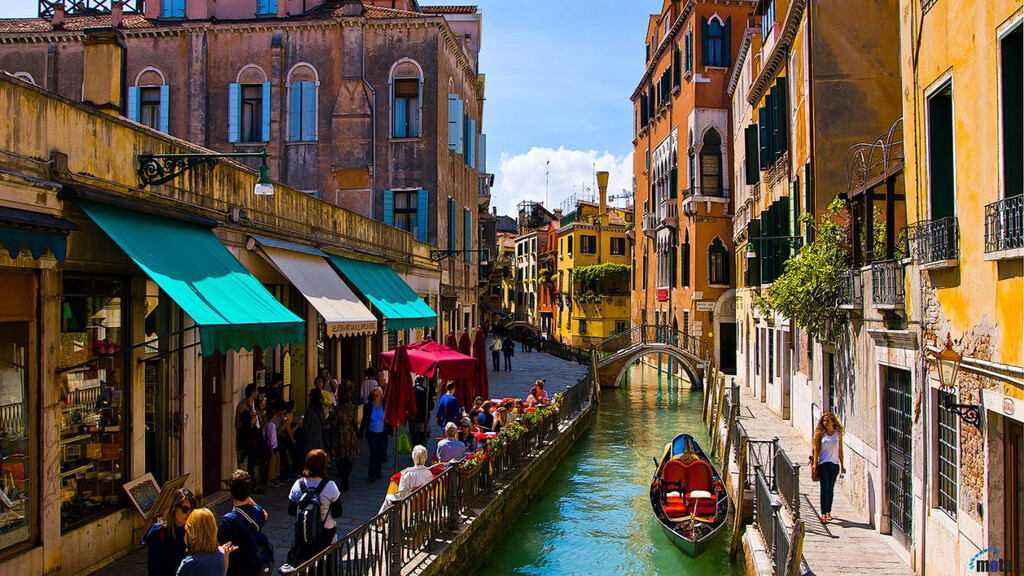This post is also available in:
Tiếng Việt (Vietnamese)
Cultural Sustainable Tourism (CST) is an approach that promotes tourism while preserving cultural heritage and ensuring economic and social benefits for local communities. It encompasses sustainable planning, responsible visitor behavior, and protective policies for historical sites, traditions, and local identities.
Numerous countries have successfully implemented CST strategies, offering valuable case studies for global application.
The Significance of Cultural Sustainable Tourism
CST plays a vital role in preserving historic and cultural sites threatened by overtourism, environmental degradation, and urbanization. Sustainable tourism ensures that future generations can experience and appreciate cultural heritage while supporting the economic well-being of host communities.
Furthermore, CST fosters intercultural understanding and strengthens national identity by maintaining the authenticity of cultural expressions.
Core Principles of Cultural Sustainable Tourism
-
Heritage Preservation: Safeguarding monuments, artifacts, traditions, and customs from the adverse impacts of tourism.
-
Community Participation: Engaging local residents in tourism-related activities to ensure equitable distribution of benefits.
-
Economic Sustainability: Generating income for local businesses and artisans while reducing overdependence on tourism.
-
Environmental Responsibility: Minimizing pollution and waste, promoting eco-friendly practices.
-
Education and Awareness: Informing visitors about cultural heritage, ethical travel behavior, and ongoing conservation efforts.
Case Study 1: Egypt – Reviving Historic Cairo
Egypt’s rich cultural heritage attracts millions of tourists annually. However, mass tourism poses significant preservation challenges. In Historic Cairo—a UNESCO World Heritage Site—sustainable tourism initiatives have been implemented to restore ancient buildings, enhance infrastructure, and support local artisans.
Projects such as the revitalization of Al-Muizz Street and Islamic landmarks aim to balance heritage protection with economic growth. Community-based programs actively involve residents in cultural tourism, ensuring shared benefits. Additionally, Egypt has introduced regulations to limit visitor numbers at sensitive sites like the Giza Pyramids to mitigate environmental and structural damage.
Case Study 2: Italy – Sustainable Tourism in Venice
Venice, renowned for its canals and historic architecture, is grappling with overtourism, threatening its cultural and environmental integrity. The city has responded with visitor caps, entrance fees, and sustainable mobility policies.
The “Sustainable Venice Tourism Project” focuses on smart crowd management, promoting eco-friendly accommodations, and encouraging off-peak travel. Support for traditional crafts and local businesses preserves the city’s cultural identity while diversifying the economy. Regulations on cruise ships have also been enforced to reduce congestion and environmental strain.
Case Study 3: Portugal – The Historical Villages Program
Portugal’s community-centered approach to CST is embodied in its “Historical Villages Program,” which preserves and promotes culturally rich rural villages. Through heritage building restoration, craft promotion, and agritourism development, Portugal has revitalized rural areas while maintaining authenticity.
Monsanto village, for instance, showcases traditional stone architecture and regional cuisine, offering visitors immersive cultural experiences that benefit local economies. Financial incentives are also provided for residents to sustain traditional lifestyles, ensuring these villages remain vibrant living communities rather than mere tourist attractions.
Implementing the principles of Cultural Sustainable Tourism requires close collaboration among key stakeholders, including governments, local communities, and tourists. By learning from these case studies, other regions can develop tailored strategies that balance heritage preservation with economic development, ensuring that tourism remains a positive force for future generations.
Case Study 4: France – Preserving Mont-Saint-Michel through a Sustainable Tourism Strategy
Mont-Saint-Michel, a UNESCO World Heritage Site and one of the most visited landmarks in France, is currently facing significant challenges due to overtourism. To mitigate the adverse effects of mass tourism on this ecologically sensitive coastal area, local authorities have implemented a series of sustainable tourism initiatives.
Specifically, visitor quotas have been introduced to regulate tourist flow and reduce pressure on architectural structures and the natural environment. In addition, eco-friendly transportation solutions—such as electric shuttle buses and pedestrian routes—have been deployed to minimize emissions and preserve the surrounding landscape.
At the same time, various conservation initiatives have been launched to ensure the ecological integrity of the coastal region and to protect the historical structures from the impacts of climate change.
Several projects have also focused on prolonging the lifespan of Mont-Saint-Michel Abbey and the surrounding heritage structures. Authorities are encouraging local businesses to adopt sustainable tourism models that contribute to preserving the cultural identity of the region while providing economic benefits to the local population.
France’s conservation strategy for Mont-Saint-Michel emphasizes the delicate balance between tourism growth and heritage preservation. These efforts not only ensure that this iconic site remains accessible to future generations, but also enrich the visitor experience through deeper engagement with the site’s unique cultural and historical values.
Challenges and Future Directions
Despite its many benefits, Cultural Sustainable Tourism (CST) continues to face several challenges, including limited financial resources, inadequate regulatory frameworks, and resistance from local communities due to concerns about over-commercialization. To address these issues, governments and tourism organizations need to implement the following measures:
- Enact stringent regulations aimed at preventing excessive commercialization and mitigating the negative environmental impacts of tourism.
- Increase funding support for cultural heritage conservation initiatives and heritage tourism development.
- Adopt digital technologies such as virtual tourism and digital preservation to help reduce visitor pressure at sensitive cultural sites.
- Promote collaboration between private enterprises and local communities to develop sustainable tourism models rooted in local heritage and identity.
Conclusion
Cultural Sustainable Tourism is crucial for maintaining the delicate balance between heritage preservation and economic development. By adopting responsible tourism policies, fostering community participation, and managing tourist impacts, destinations like Egypt, Italy, Portugal, and France have become exemplary models of CST.
These experiences emphasize the need to integrate conservation with community development, ensuring cultural heritage remains intact for future generations. With careful planning and innovative approaches, CST can continue to thrive—protecting cultural identity while advancing socio-economic progress.
To advance this dialogue, the Cultural Sustainable Tourism (CST) Conference will be held aboard a Nile River cruise in Egypt in October 2025. The event will gather experts, policymakers, and stakeholders to exchange best practices, innovative solutions, and strategic frameworks for sustainable cultural tourism development.
Participants will also experience Egypt’s cultural heritage firsthand while engaging in meaningful discussions on global CST promotion and preservation.
( IEREK Blog)












